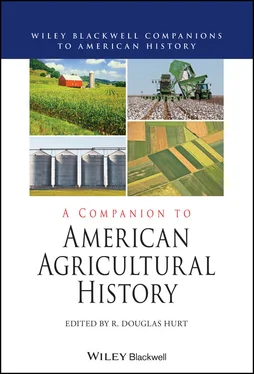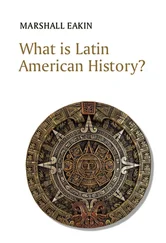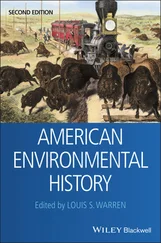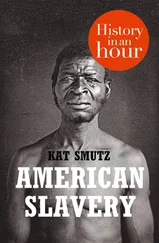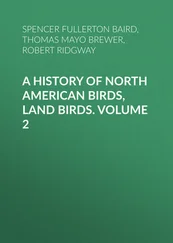1 ...8 9 10 12 13 14 ...58 The “Hohokam Millennium,” started before 500 ce, was over by 1500 CE (Fish and Fish 2007). Europeans encountered Pima-speaking farmers in the Salt and Gila river valleys growing maize, squashes, and beans including the tepary, but population density and degree of sociopolitical integration were far lower than before. Platform mounds and great houses were no longer built. The massive irrigation canals fell into disuse, although Native farmers still used small-scale water management systems. Traditional agricultural knowledge was passed on, however, and desert-adapted landraces are still grown by members of Tohono O’odham (Papago), Akimel O’odham (River Pima), Raramuri, and Pima Bajo communities in southern Arizona and northwestern Mexico.
ANCESTRAL PUEBLOAN AGRICULTURAL ON THE COLORADO PLATEAU AND NORTHERN RIO GRANDE VALLEY
People in the Four Corners region began growing maize between 4000 and 3500 years ago, but settlements similar to Early Agricultural sites in the Tucson Basin are not known outside the Hohokam culture area. The appropriately named Old Corn site in west-central New Mexico yielded charred maize fragments from thirteen of the thirty-four excavated pit features, with direct dates on corn clustering in the range of 2200–1900 BCE (Huber 2005). The site, located at an elevation of 6200 feet, is described as a seasonal foraging camp adjacent to a large wash, with hearths, storage pits, and debris from stone tool manufacture.
Dating to the first millennium BCE, pithouse villages across the Colorado Plateau and Mogollon Highlands signal the presence of food producers who were evidently becoming more sedentary but still practicing flexible strategies of seasonal mobility to sustain a mixture of foraging and maize farming. Archaeologists classify these settlements as Basketmaker II, a period extending from 500 BCE to 400 CE (Matson 2006). Maize is ubiquitous, but beans are poorly represented if present at all until the following Basketmaker III period (400–750 CE). Dry rockshelters such as Turkey Pen Shelter in the Cedar Mesa region of southeastern Utah were used for burial, storage, and other purposes. Food remains were preserved in exceptional condition in many of these alcoves.
One part of Turkey Pen Shelter had a nearly 2 m deep deposit of mostly human paleofecal remains mixed with turkey droppings, dating between 1 and 200 CE. Maize was the dominant plant food, constituting more than 50 percent of most human fecal contents by weight. Other abundant foods were pinyon pine nuts, Indian rice grass ( Achnatherum hymenoides ), squash, and both chenopod and amaranth seeds. Stable carbon isotopes also demonstrate high C-4 plant consumption (Matson and Chisolm 1991). Fifteen desiccated maize cobs from Turkey Pen Shelter were recently used by molecular biologists to help track developments in crop breeding across North America. Significantly, the results of this archaeogenomic study point to in situ selection for traits allowing Basketmakers to grow corn in the temperate climate of upland southeastern Utah, at an elevation of 1830 m (6000 feet). According to Swarts et al. (2017) “1900-year old maize already maintained the alleles conferring early flowering, although the lineage was likely only marginally adapted to the TPS [Turkey Pen Shelter] environment.” Sequencing ancient DNA from older as well as more recent Southwest maize and from archaeological maize in eastern North America will eventually answer questions about the evolutionary trajectory of North America’s most important crop.
Farmers across the Colorado Plateau became more committed to agriculture after 400 CE, with common beans fully embraced for the first time along with the ceramic technology enabling them to be boiled for hours. Other crops not known to have been grown earlier include lima beans, scarlet runner beans, butternut squash, cushaw squash, bottle gourds, and cotton, all of which were originally domesticated in Mesoamerica and spread northward through the Sonoran and Chihuahuan regions (Adams and Fish 2011). Late Basketmakers (Basketmaker III) lived in substantial pithouse villages and, like their Basketmaker II predecessors, utilized pits near their houses and dry shelters for storage of crops and other items. Transitions from pithouses to above-ground pueblos took place during the last centuries of the first millennium CE, with storage rooms added to small room blocks built of adobe bricks or stone (Cordell and McBrinn 2012).
The Pueblo period extends from 750 CE to Spanish contact in 1540, with continuing economic focus on maize, beans, and squashes and a growing emphasis on cotton in drainages such as the Little Colorado River where moisture permitted (Milner and Wills 2005). Farmers on the Colorado Plateau did not build large irrigation canals, but they diverted water to fields by way of ditches, and they practiced a variety of water- and temperature-management strategies appropriate to local topographic and climatic conditions. Among the most easily recognizable are terraced slopes (contour terraces), check dams and diversion dams, cobble-mulched fields, and gridded fields with borders and interior ridges formed by clay (Adams and Fish 2011).
Basketmaker pithouses preceded early Puebloan room blocks at Mesa Verde in southwestern Colorado, with population levels low enough for crops to be raised on intermittent stream terraces and along rainfall-fed runoff zones with relatively fertile soils replenished by alluvial deposits. Between 1150 and 1300 CE, cliff dwellings with as many as 200 rooms were built in alcoves along canyon rims, and villages capable of housing several hundred people grew up on the mesa top and in watersheds near Mesa Verde proper (Milner and Wills 2005). Tensions or conflicts, likely over arable land and exacerbated by drought, are indicated by the defensible locations of sites and by widespread skeletal evidence of trauma such as arrow wounds and broken bones (Cordell and McBrinn 2012).
Depopulation of the Four Corners region, including Mesa Verde, took place during the final decades of the thirteenth century CE. Many families moved into the Rio Grande valley of northern New Mexico, where some fourteenth-century pueblos had more than 1000 rooms, multiple plazas, and large kivas where rituals were staged and initiates learned how to live in societies consisting of families with diverse roots. Concentrations of people also arose in well-watered parts of the southern Colorado Plateau such as the Hopi Mesas and the Little Colorado River valley of eastern Arizona (Cordell and McBrinn 2012). Many aspects of traditional agriculture and cuisine somehow survived the destructive effects of Spanish invasions that began with the Coronado Entrada (1540–1542) and were followed by the founding of missions and land-grant colonies in New Mexico, waves of epidemic diseases, and eventual take-over by the US Government. Old World crops were embraced to varying degrees (Adams and Fish 2011), but the centrality of maize never disappeared, and it persists today.
The Pacific Northwest, which includes the Northwest Coast and adjacent interior Columbia Plateau, was formerly considered a region where complex, sedentary hunter-gatherers took advantage of rich marine resources but did not engage in agricultural pursuits prior to introduction of Old World crops (see Deur 2002a and 2002b for good discussions of how this paradigm became entrenched). Recorded observations of human-engineered planting beds, as well as propagation of both tobacco ( Nicotiana quadrivalvis ) and economically important root vegetables failed to alter the statuses of Northwest Coast societies in academic classification schemes wherein agriculture was narrowly defined as large-scale production of unmistakably domesticated plants. Recent attention to the elaborate infrastructure, considerable amount of labor, and high productivity of the cultivated plants and landscapes has validated usage of the terms “garden,” “cultivation,” and “food production,” as opposed to “foraging” in the sense of procurement of wild resources.
Читать дальше
